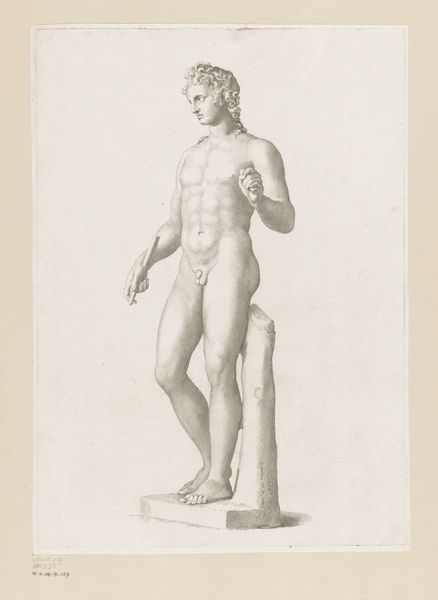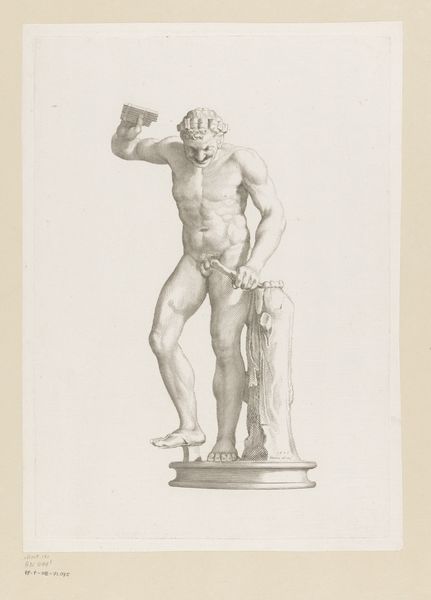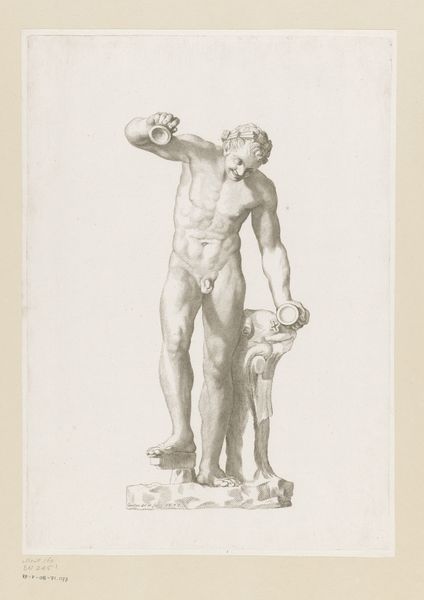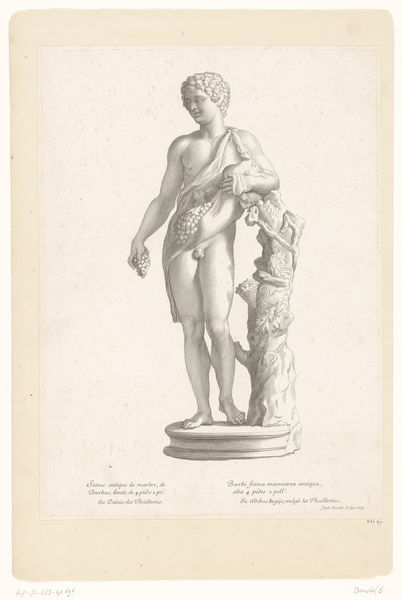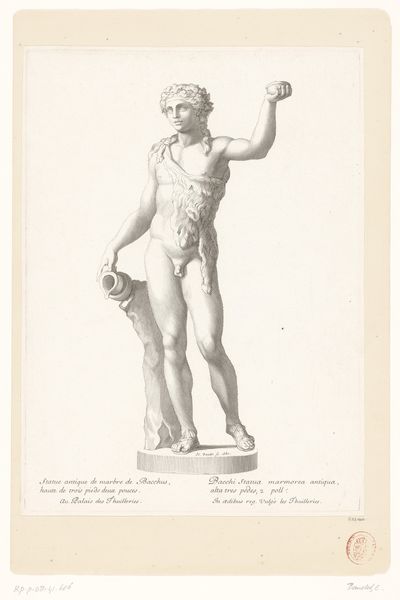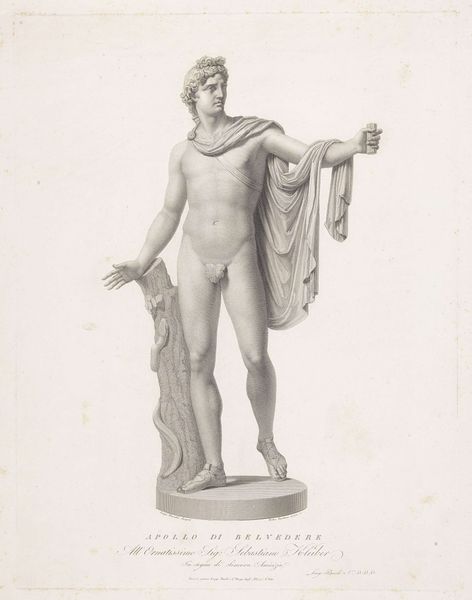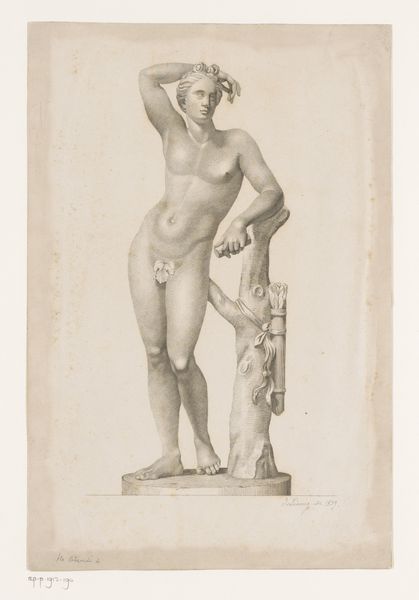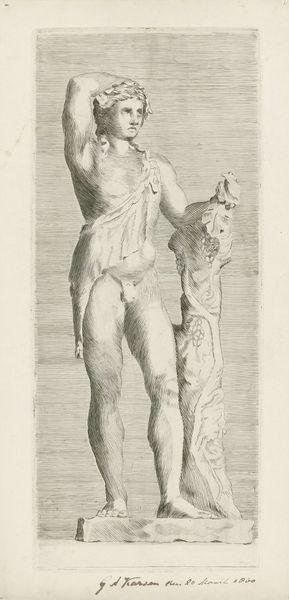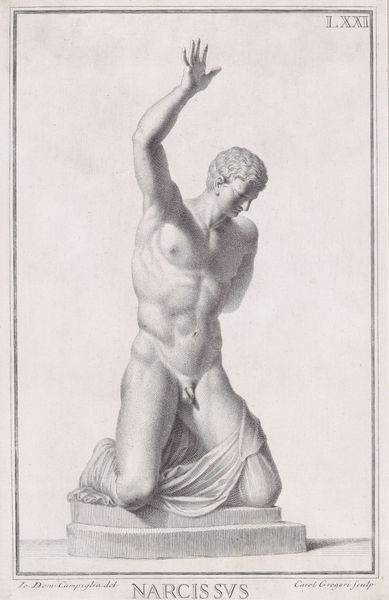
drawing, print, pencil, graphite
#
portrait
#
pencil drawn
#
drawing
# print
#
pencil sketch
#
classical-realism
#
charcoal drawing
#
figuration
#
pencil drawing
#
ancient-mediterranean
#
pencil
#
graphite
#
pencil work
#
italian-renaissance
Dimensions: height 398 mm, width 286 mm
Copyright: Rijks Museum: Open Domain
Claude Mellan created this drawing of a statue of Bacchus using pen and brush in the 17th century. Bacchus, the Roman god of wine, represents not just the joys of intoxication but also the breaking down of social barriers. At a time when Europe was rigidly ordered by class and religious doctrine, the figure of Bacchus was a potent reminder of the possibility of liberation. Mellan, who was French, spent a significant portion of his career in Rome. There, he would have been in contact with classical sculpture as well as the work of artists like Caravaggio, who emphasized the expressive potential of the human body. Drawings like this one served an important function. Before photography, they were crucial for disseminating knowledge of classical art. Art academies used them to teach students about the aesthetic principles of antiquity. Through careful research into the cultural context of artworks like this one, we can better understand the ways art shapes and reflects social values.
Comments
No comments
Be the first to comment and join the conversation on the ultimate creative platform.
